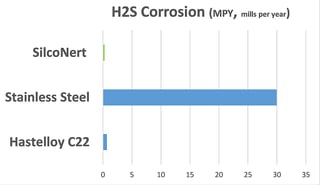 *
*
Previous blog posts highlighted the need for a reliable sample transport and analytical system in process monitoring and regulatory compliance programs. If your sample system is up to par but you're still having problems getting reliable results, it could be that you've overlooked the backbone of any sample system, the calibration flowpath.
 New regulations like Tier 3, EPA 325, and Subpart JA require significantly improved sensitivity and detection capability for a wide range of pollutants including H2S, SOx, NOx, and VOCs. Existing calibration regimes may not be capable under new compliance standards, resulting in costly and time consuming problems like:
New regulations like Tier 3, EPA 325, and Subpart JA require significantly improved sensitivity and detection capability for a wide range of pollutants including H2S, SOx, NOx, and VOCs. Existing calibration regimes may not be capable under new compliance standards, resulting in costly and time consuming problems like:
- Analytical errors
- Extensive troubleshooting
- Delays in results and response time
- Frequent system repairs
Today's calibration systems must be designed for both high concentration exposure and extreme sensitivity and inertness for low level resolution. Consequently, systems must have both corrosion resistance and durability for high concentration exposure and extreme sensitivity and inertness for low level response. To learn how to improve response and get the results you need, go to our Chemically Inert Coatings page to get data and tips on how to improve detection and test quality.
Under EPA mandated NIST or GMIS traceability, systems must achieve relative accuracy of 1%. For example a flare monitoring system under Subpart JA may see 3000 ppm H2S which can corrode components and at the same time need part-per-billion accuracy for 5ppm low side resolution.

Design Systems For Inertness And Durability
Cal gas flowpaths must be both inert and corrosion resistant. In order to achieve optimum performance operators should follow these guidelines:
- Minimize polymeric exposure in flowpaths. Polymer seals can be adsorptive. This may not be an issue when calibrating at 3000 ppm but it will become a major headache when calibrating at 30ppm with a 0.3ppm accuracy.
- Moisture control. Moisture can contribute to system corrosion and will be adsorptive to active compounds like H2S.
- Corrosion control. Corrosion resistant surfaces improve system durability and life.
- Prevent flowpath adsorption. A reactive flowpath will adsorb cal gas samples, at best making system stabilization a lengthy endeavor and at worst making stable and reliable results impossible.
- Durability. Systems can be exposed to extreme temperatures, rough handling, and physical stress. Be sure flowpath surfaces are up to the task.

SilcoNert® coatings check all the boxes for improved calibration system reliability.
A recent article in American Laboratory by Larry Gallagher of Concoa highlights the special requirements needed for gas control in low level monitoring of pollutants. The article discusses the need for improved control, durability, and inertness of critical flowpaths. The key design element in flowpath design? An inert surface like SilcoNert®. SilcoNert prevents surface interaction and adsorption of reactive cal gases while shedding moisture and improving corrosion resistance.
Faster response.
SilcoNert® coated flowpaths improve response by 10x by preventing surface interaction of reactive stainless steel with active compounds like H2S. Comparative response curves show a dramatic increase in response when using SilcoNert coated flowpaths; reducing cal times and improving sensitivity and reliability of results.*

And Corrosion resistance.
Stainless steel corrosion resistance is also improved by an order of magnitude or more when using SilcoNert coated flowpaths.* SilcoNert improves corrosion resistance, preventing system damage and improving reliability.

Learn more about how to improve calibration in today's low level sampling world. Read the complete article in American Laboratory.

*Image and data credit: Concoa, American Laboratory
 *
* New regulations like
New regulations like 




